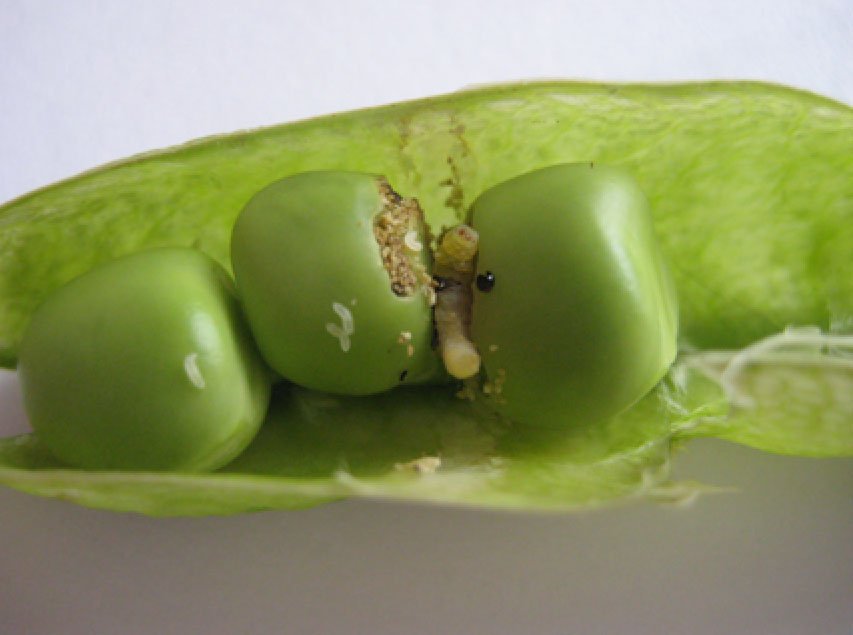 Full
FullGuide »

January 2025
Pea moth
Pea moth is one of the most damaging pea pests in this country and in Europe. The caterpillars(larvae) feed on peas within the pod. In vining peas, there is a risk of crop rejection because of contamination of the produce by damaged peas which cannot be removed mechanically. In combining peas for premium markets including human consumption or seed, damaged peas are removed by the merchant and the price paid to the grower is reduced in proportion. Although moth damage can reduce quality, the yield loss is rarely significant and the presence of damage in peas for animal feed compounding is not important. Control in these crops may only be justifiable where the damage levels in previous crops have been high.

CONTROL
Spraying should be related to the development of the insect rather than to the stage of growth of the crop therefore insecticides should be applied while the larvae are exposed, that is, from the time of hatching to the time of entering the pods. The timing of application is critical for maximum control.
TIMING OF SPRAYS
Since pea moth can be a localised problem, overall spraying of peas over a wide area on any one date is not advisable as local conditions influence the behaviour of the pest. A system of accurately timing the application of insecticides is commercially available in the form of pheromone traps. These traps, when placed in a pea field, attract male moths and by monitoring the catches in the trap, a grower can decide whether there is a need to spray, and time any necessary spray application efficiently on his own farm.
The traps were developed by Rothamsted Research and fully tested by PGRO and ADAS.
Pea moth monitoring systems are available from the following suppliers:
Koppert UK Ltd., 8 Tudor Rose Court, 53 Hollands Road, Haverhill, Suffolk, CB9 8PJ, UK
Tel: 01440 704488
www.koppert.co.uk
Dragonfli Ltd., Unit 4 Rippers Court, Sible Hedingham, Halstead, Essex, CO9 3PY, UK
Tel: 01376 563322
www.dragonfli.co.uk
Andermatt UK, 47 Compton Road, Brighton, West Sussex, BN1 5AL, UK
Tel: 07939 395059
Email: contact@andermattuk.com
www.andermattuk.com
Traps are received in sets of one or two, depending on the supplier. One set is required for each block of peas, for example, a farm having all the pea fields within a restricted area need only purchase one set of traps, but in fields of 50 ha or more two sets are required.
Traps must be placed in the pea crop by the middle of May and examined at two-day intervals. The number of moths caught by each of them is noted on each occasion. Traps can be suspended on pheromone trap pole kits or fence posts in the field and should be placed at canopy height, moved upwards at intervals as the crop grows.
a. Combining Peas (premium markets)
The threshold, which determines whether treatment is necessary, is ten or more moths caught in either trap on two consecutive occasions.
Timing of sprays must be related to egg development, and this is affected by temperature.
A spray date can be obtained from the PGRO website - www.pgro.org based on a computer prediction, 3 - 4 days after reaching a threshold.
On the predicted spray date, crops which are at the first pod set stage, or which have flowered should be sprayed, but later crops should only be sprayed when they reach first pod set. Crops with flat pods are susceptible to damage.
A second application should be applied 10-14 days later.
b. Vining Peas
Where the acceptable level of damage is much lower, the threshold for combining peas is not suitable and therefore the traps should only be used as a guide as to the presence of moths. In areas where damage has been a problem in the past, crops which are at the first pod set stage should be treated with a single application. Take care to observe the minimum interval between application and harvest.